Life
Sign up for our newsletter
We summarize the week's scientific breakthroughs every Thursday.
-
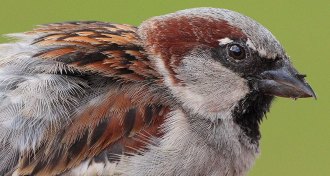 Life
LifeLight pollution can prolong the risk of sparrows passing along West Nile virus
Nighttime lighting prolongs time that birds can pass along virus to mosquitoes that bite people.
By Susan Milius -
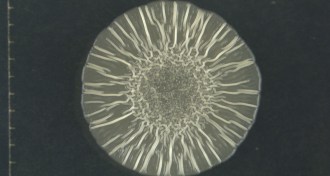 Microbes
MicrobesThe secret to icky, sticky bacterial biofilms lies in the microbes’ cellulose
Bacteria use a modified form of cellulose to form sticky networks that can coat various surfaces.
-
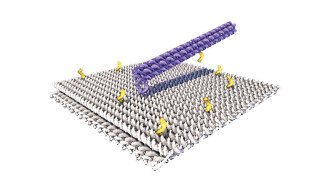 Life
LifeA robotic arm made of DNA moves at dizzying speed
A DNA machine with a high-speed arm could pave the way for nanoscale factories.
-
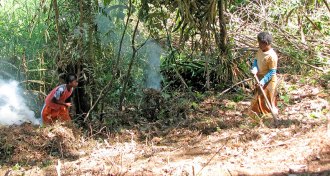 Anthropology
AnthropologyHunter-gatherer lifestyle could help explain superior ability to ID smells
Hunter-gatherers in the forests of the Malay Peninsula prove more adept at naming smells than their rice-farming neighbors, possibly because of their foraging culture.
By Bruce Bower -
 Animals
AnimalsThe mystery of vanishing honeybees is still not definitively solved
The case has never been fully closed for colony collapse disorder, and now bees face bigger problems.
By Susan Milius -
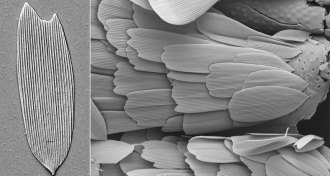 Paleontology
PaleontologyTiny scales in ancient lagoon may be the first fossil evidence of the moth-butterfly line
Fancy liquid-sipper mouthparts might have evolved before the great burst of flower evolution
By Susan Milius -
 Animals
Animals18 new species of pelican spiders discovered
A researcher used old and new specimens to discover 18 species of pelican spiders from Madagascar.
By Dan Garisto -
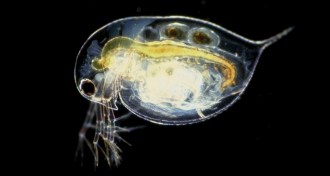 Climate
ClimateRising CO2 in lakes could keep water fleas from raising their spiky defenses
Rising CO2 in freshwaters may change how predators and prey interact in lakes.
-
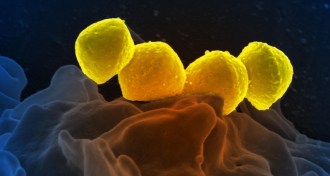 Health & Medicine
Health & MedicineNot all strep infections are alike and it may have nothing to do with you
Add-on genes in some bacteria shape the way strains interact with the immune system.
-
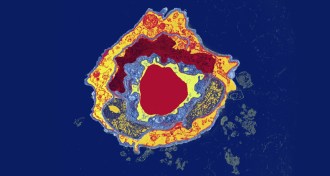 Neuroscience
NeuroscienceProtein helps old blood age the brains of young mice
Increased levels of one protein in old blood may contribute to its aging effects on the brain, a mouse study suggests.
-
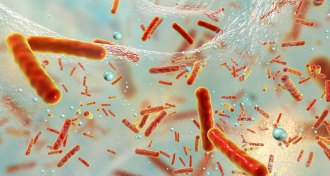 Microbes
MicrobesA new gel could help in the fight against deadly, drug-resistant superbugs
An antibacterial ointment breaks down the defenses of drug-resistant microbes such as MRSA in lab tests.
-
 Life
LifeReaders wrangle with definition of ‘species’
Readers asked about the definition of "species," a new atomic clock and how a neutron star collision produces heavy elements.